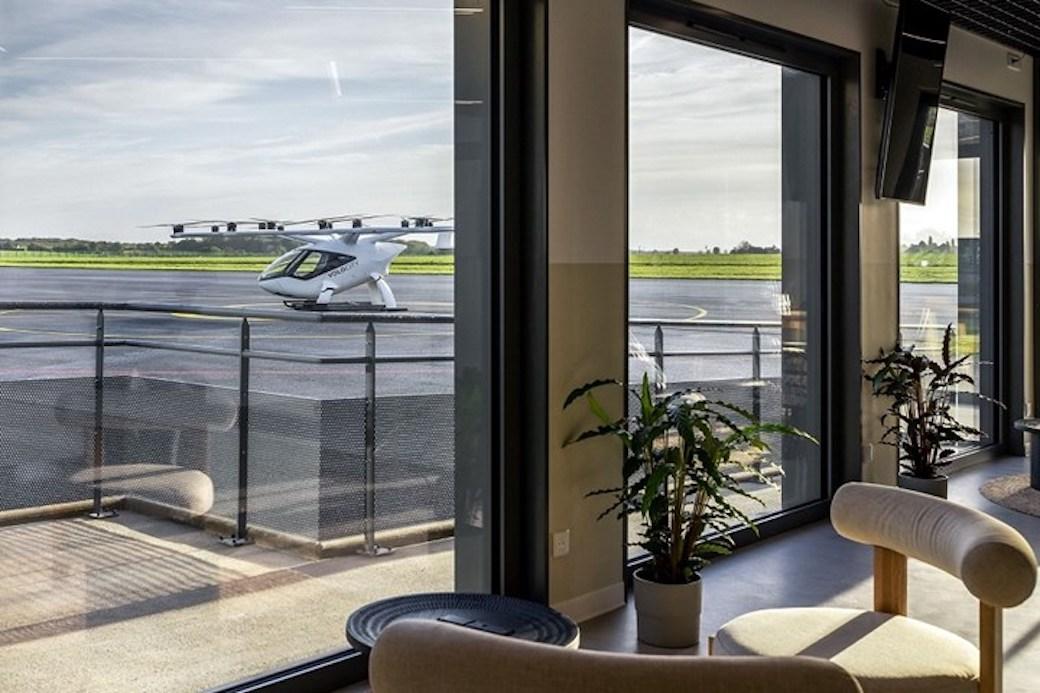SITA's Europe President Sees 10-Min. Max For Vertiport Screening, Boarding

SITA recently participated in a Series E funding round for Volocopter.
Proponents of electric vertical-takeoff-and-landing (eVTOL) vehicles are fond of emphasizing the time savings enabled by urban air mobility (UAM), with the potential for commuters to save precious working hours that otherwise are wasted each week while they sit in idle street traffic.
But the true vision of UAM, and the time savings it can produce, can be achieved only if the process of transiting in and out of vertiports is capped at a maximum of around 10 min. at both ends, according to Sergio Colella, European president of SITA, a global provider of digital and information-technology (IT) services for airports and airlines.
“Imagine an average air taxi ride is 20 min. and you take that to avoid a 1-hr. congestion by car, which is a good value proposition,” Colella tells the AAM Report. “Now, let’s say you have to wait 20 min. at the vertiport before boarding, and another 20 min. after you land. At that point, the value proposition of UAM is killed, and you’d be better off just taking a motor taxi.”
In order to deliver the promised time savings to justify the added expense of flying over driving, each leg of the vertiport journey—including all processes related to check-in, baggage and security—should take no more than 10 min., and preferably even under 5 min., according to Colella.
“Similar to the airport, all procedures related to safety, security and recognition of the passenger must be done properly,” Colella says. “But the difference is that vertiport procedures must be done in a way that is totally digital and almost as quick and easy as taking a taxi. Really, for maximum value, it shouldn’t take more than 5 min. to arrive at the vertiport and jump into an eVTOL.”
One critical element of the vertiport process will be quick and efficient security-protocol management. The process should be somewhat smoother than a traditional airport because of not only lower passenger volumes, which Colella estimates will top out at around 5,000 passengers per day for the very largest vertiports.
Colella, for his part, believes SITA’s portfolio of digital and IT solutions will be instrumental in helping vertiports achieve the seamless aircraft boarding and deplaning processes needed to deliver on the promised benefits of UAM. The portfolio includes a cell-phone app to manage check-ins and reservations, biometrics and facial recognition to identify passengers, and automated baggage-handling machines.
“By digitalizing the experience and leveraging the latest technologies like biometrics, you can have that kind of 10-min.-max for the boarding and exit from the eVTOL landing area,” Colella says.
SITA has been betting big on the emerging UAM sector, including by participating in a recent Series E funding round for Volocopter, part of a more expansive strategic partnership that will see it become the preferred digital and IT systems integration partner for the German OEM. On the infrastructure side, SITA has partnered with Skyports to provide its technology to the London-based company’s planned vertiport networks. Altogether, the complementary partnerships create an ecosystem that can be pitched to governments as a comprehensive, end-to-end solution, Colella says.
Observers can get a taste of that synergy at the Skyports Cergy-Pointoise vertiport testbed in Paris, where the partners have been demonstrating their technologies—including SITA’s check-in, screening and boarding processes—in a simulated vertiport terminal intended to highlight how passengers will traverse the UAM ecosystem.
“We’re very excited and eager to transition from experimentations and simulations to real-life experiences,” Colella says. “We are big believers in UAM, and we think that by the end of this decade, these services will be widespread.”





